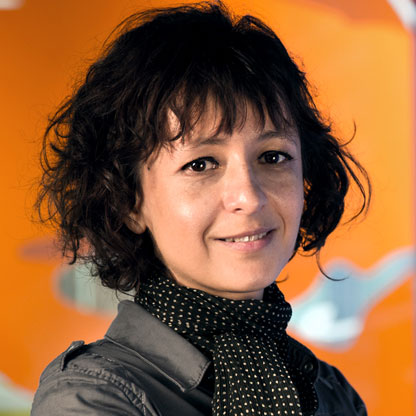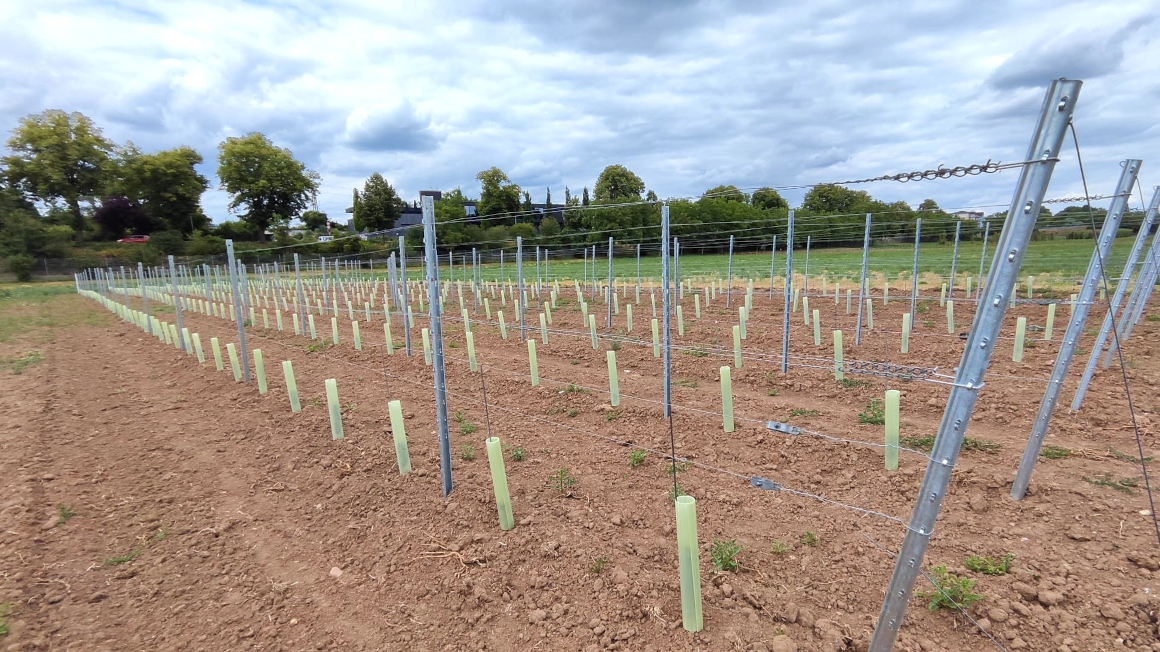Cutting a swathe with her gene-scissors
Emmanuelle CharpentierProfession:
Molecular Biologist
Position:
Head of the research department at the Helmholtz Centre for Infection Research in Braunschweig

Profession:
Molecular Biologist
Position:
Head of the research department at the Helmholtz Centre for Infection Research in Braunschweig

Enemies are disposed of by the cutting-out of genetic material – this simple trick served as inspiration for French–born Emmanuelle Charpentier, ultimately leading her to revolutionise molecular biology. Today, at the Helmholtz Centre for Infection Research in Braunschweig, Charpentier continues to conduct research and develop her exceptionally precise gene-scissors for use in biotechnology-related fields.
Paris, 1981. The twelve-year-old Emmanuelle comes home from school, where she has been studying her favourite subject – biology. The girl says to her mother: “One day, I’m going to work at the Pasteur Institute!” A confident prediction, but Emmanuelle Charpentier did indeed go on to complete her doctoral thesis at the renowned Parisian research centre. However, the twelve-year-old Charpentier could not foresee that 30 years later, as a weathered biologist, she would be responsible for a minor revolution in her field.
Universal tool for DNA fragments
At this time, Charpentier is occupied with the study of bacterial protection mechanisms against viruses: This generally takes the form of the destruction of enemies by means of cutting out their genetic material. The big question is: Would it be possible to replicate this cutting mechanism? The researcher knows how to divide gene segments as well as how to remove, add or modify specific portions, a subject with which many of her colleagues are likewise occupied. To date, this kind of undertaking involved months of laborious and complex work. Charpentier’s ambition is first of all to fully understand the bacterial cutting mechanism and then translate this knowledge into a form of universal tool. This would enable genetic modifications to be carried out much faster than is currently possible. In turn, this could lead to new treatment options, including for human genetic diseases. However, there are issues to overcome: “We did indeed discover how the immune system works in bacteria and how we could use this for a new technology,” she says in retrospect, “but I missed the final component required for making the system work in cells with different functions and applications.”
Important publication in Science Magazine
Whilst based in the far north of Sweden, she eventually succeeded in decrypting this final component. In 2009, following positions in the USA and Austria, she moved her work to the University of Umea, and thereby into precisely the right environment for her basic research. As Charpentier recalls, the financial conditions were excellent and the academic focus was strongly oriented towards microbiology Moreover, she had the freedom to pursue high-risk and labour-intensive projects, including her research into gene-scissors. This hard work and serendipitous surroundings eventually provided some spectacular results: In 2012, the scientist published a complete guide for the cutting mechanism in the prestigious journal Science. Since then, scientists around the globe have been using the new system from the former straight-A student in Biology. Since the beginning of 2013, Charpentier has lived and worked in Braunschweig in Germany. At the local Helmholtz Centre for Infection Research, the 45-year-old heads the department ‘Regulation in Infection Biology’. The Frenchwoman considers the frequent moves and the adapting to new languages and cultures as simply part of the job. “This has made me more creative and has repeatedly given me fresh momentum,” she says. She thus recommends a stay abroad to all her students and postdocs, and reminds them to grasp any available opportunity. “Some people fail to recognise a lucky break, even when it’s staring them in the face. You have to make it happen and then jump right in.” Never leaving the country, viewing science as a nine-to-five job – this doesn’t cut it, in her opinion. “You can’t make a career out of that. You’re up against some serious competition, and that’s something you have to be clear about.”
A fan of ballet
At the Hannover Medical School, Charpentier – as one of just three women among 37 men – now holds one of the 40 highly endowed Humboldt Professorships. Surely this would be a case for a quota system? No, thinks Charpentier: “This kind of positive discrimination is more likely to hurt women. I would be worried that their research would be seen as second-rate.” However, she has observed that women have to perform better than male colleagues in the same positions. With her dark brown short curly hair and her open smile, the petite scientist looks much younger than her mid-40s – something that is possibly due to her earlier passion for ballet-dancing. She takes her daily commute by bike – twelve kilometres in total. “I have to get my energy out,” she says. “I have a great deal of it.” Sometimes she lets off steam at a rock concert. “It has happened that I found myself in a crowd of a thousands of kids. I have no problem with that at all!” she says, laughing. However, the demands of work means that there’s usually not much time left for dancing, not least because she recently co-founded a company of her own. CRISPR Therapeutics will utilise the new technology to develop therapies for life-threatening genetic diseases. “I want to accompany my baby for a little while yet,” says Emmanuelle Charpentier. “Right now, it’s all happening so fast that I’ve barely had time to take it in.”
Author: Maimona Id
The text originally was published in 2014 in the "Helmholtz Perspektiven" Magazine.


